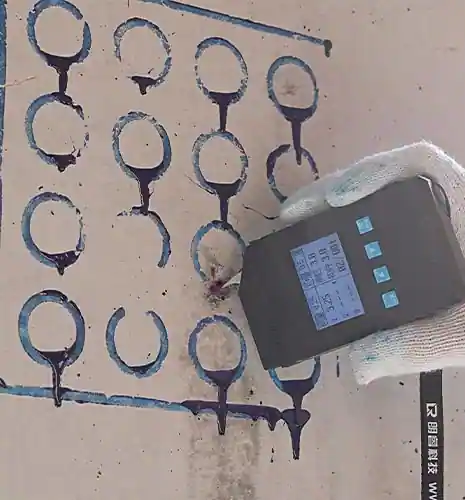What is Concrete Carbonation?
Concrete carbonation is the chemical reaction that occurs when Ca(OH)2, produced through the hydration of cement in concrete, reacts with CO2 in the air to form CaCO3. This process is referred to as concrete carbonation. Typically, carbonation can enhance the surface hardness of concrete and, in the medium to low-strength range, result in increased hardness rather than increased strength.

The Relationship Between Rebound Testing and Concrete Carbonation
Rebound testing is a method used to calculate the compressive strength of concrete by measuring surface rebound values and carbonation depth. The formula used for calculation is derived from mathematical relationships established through extensive experimentation between rebound values, carbonation depth, and the strength values of concrete specimens.
Why Carbonation Depth Isn't Typically Measured for High-Strength Concrete in Rebound Testing
In general, the carbonation depth of concrete has some influence on the determination of concrete compressive strength through rebound testing. This influence is associated with external factors such as the age of the concrete, the concentration of CO2 in the atmosphere, and environmental temperature and humidity. In our country, when assessing the degree of its impact, carbonation depth is introduced as a parameter into regression equations.
For high-strength concrete, on one hand, the surface is relatively dense, and it has strong resistance to carbonation. On the other hand, carbonation has a smaller impact on rebound values for high-strength concrete. Therefore, measuring carbonation depth is typically not necessary.
What is the Typical Range of Carbonation Depth in Concrete?
Typically, the range for carbonation depth in concrete is considered to be between 0.5 and 6 mm.
At What Stage of a Project Is Carbonation Depth Measured?
Typically, carbonation is a very slow chemical reaction in the natural environment, and it can even increase the surface density of concrete after carbonation. Therefore, carbonation depth measurement is usually conducted after the concrete has had some time to age, often as part of a durability assessment.
Exceptional Carbonation
Exceptional carbonation refers to a significant increase in carbonation depth occurring within a relatively short period. This can be attributed to flaws in current methods of measuring carbonation depth. Presently, the measurement of carbonation depth is based on the principle of phenolphthalein-alcohol solution turning red in the presence of "alkalinity" on the concrete surface, rather than directly measuring the carbonation depth. This method is generally simple, convenient, and reliable. However, when acid-based form release agents are used, or when concrete is poorly cured, and cement hydration is incomplete, the concrete surface may lack the presence of calcium hydroxide and may not exhibit alkalinity. In such cases, using the phenolphthalein-alcohol method for carbonation measurement can result in significant errors, adversely affecting the accuracy of strength assessment through rebound testing.
Ensuring Accuracy in Carbonation Depth Testing
During concrete strength testing, specialized measuring instruments should be employed, and procedures must strictly adhere to specifications to ensure that depth measurements are vertical and not estimated.

